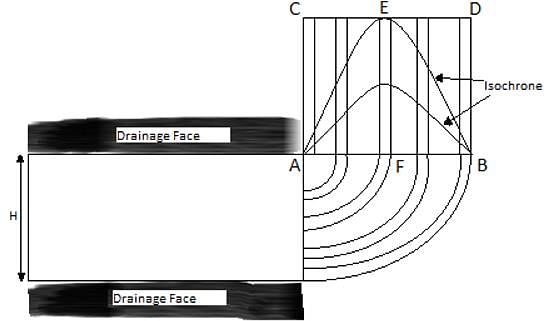Terzaghi's One Dimensional Consolidation Theory - Civil Engineering (CE) MCQ
10 Questions MCQ Test Soil Mechanics - Terzaghi's One Dimensional Consolidation Theory
The theoretical concept of consolidation process was developed by _____________
In Terzaghi’s Theory of one dimensional consolidation, deformation of soil is entirely due to _________________
In Terzaghi’s Theory of one dimensional consolidation, Darcy’s law is _______
In determination of one-dimensional consolidation as shown in the figure, the line CD represents ___________

At intermediate time t, the consolidating pressure is equal to ___________
The isochrones represents ___________
The hydraulic gradient i is given by _________
In Terzaghi’s Theory of one dimensional consolidation, soil is considered to be __________
In Terzaghi’s Theory of one dimensional consolidation, soil particles are ____________ and water is ______________
In Terzaghi’s Theory of one dimensional consolidation, coefficient of permeability is ______
|
30 videos|77 docs|74 tests
|



 equal to ∆σ. Hence, at initial time t0,
equal to ∆σ. Hence, at initial time t0,  . This is represented by the line CD.
. This is represented by the line CD.
















